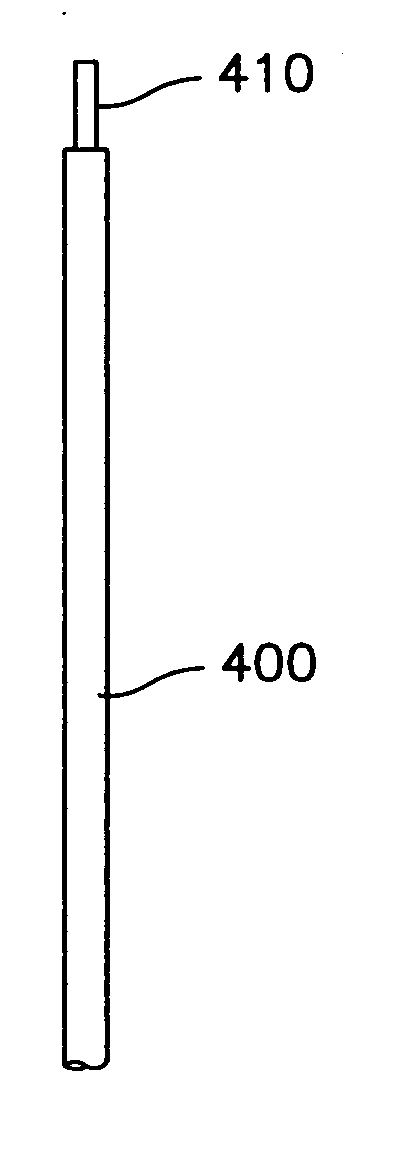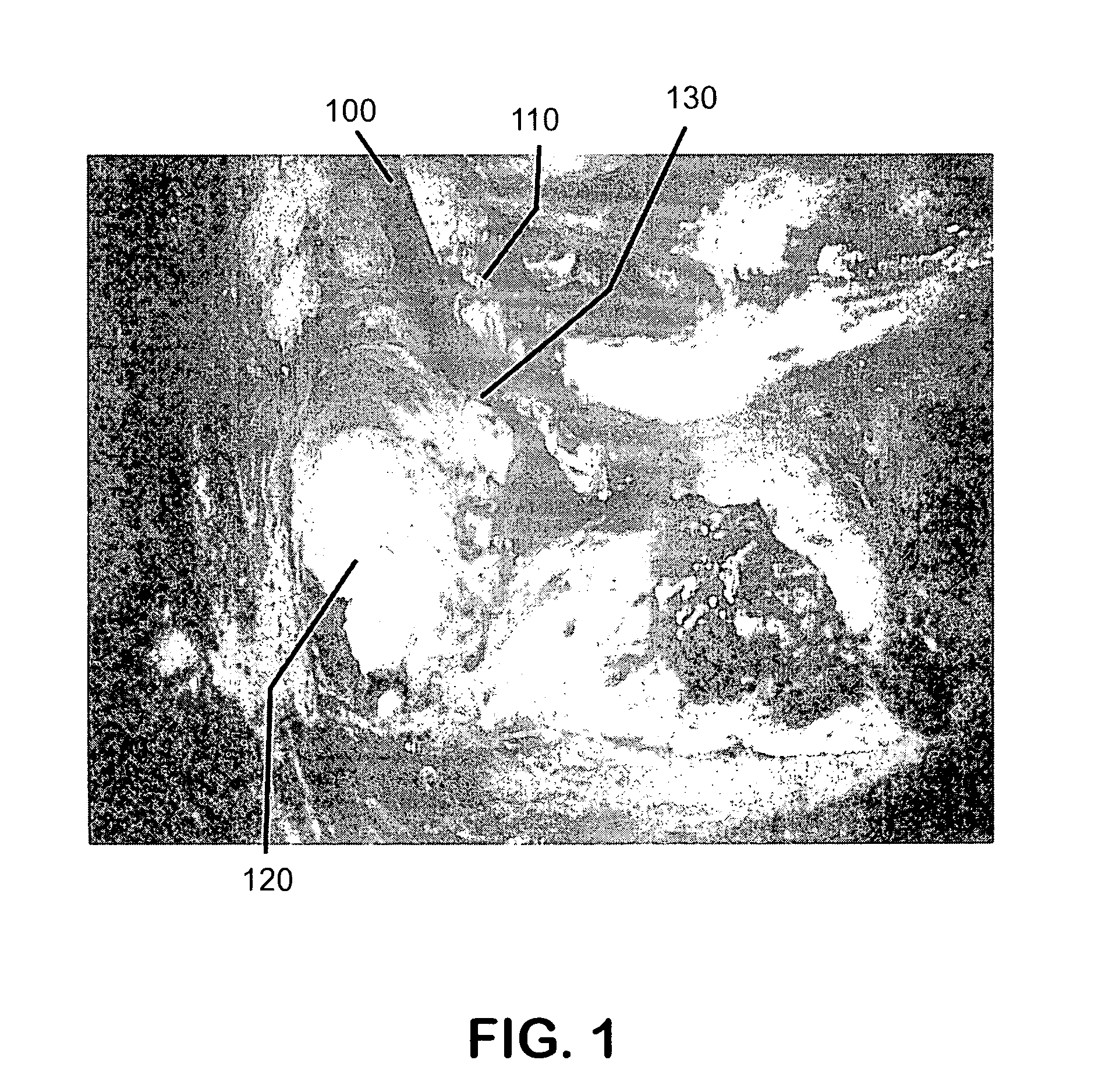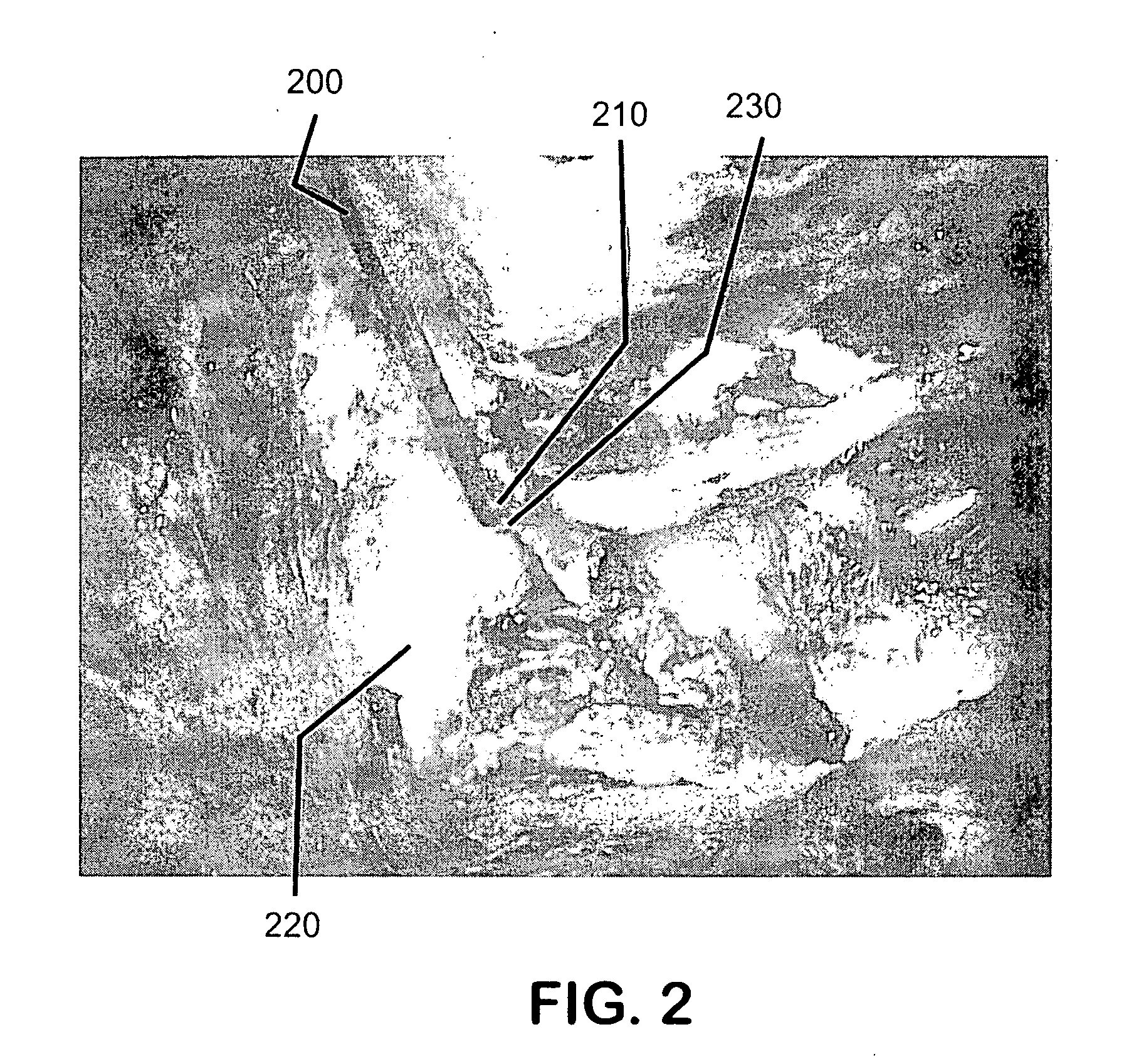Fiberoptic laser Doppler probe
a fiberoptic laser and probe technology, applied in the field of fiberoptic laser doppler probes, can solve the problems of large soft tissue defects, post-operative facial weakness or deafness, and inability to record hearing and facial function during surgery, so as to prevent any light distortion and accurately measure the viability of the flap
- Summary
- Abstract
- Description
- Claims
- Application Information
AI Technical Summary
Benefits of technology
Problems solved by technology
Method used
Image
Examples
Embodiment Construction
In accordance with an embodiment of the present invention, a
[0033] Laser Doppler Fiber-optic (LDF) probe is provided to measure microvascular blood flow in tissue during surgery to obtain a measure of real-time tissue perfusion.
[0034] As tissue structures may comprise small, non-planar surfaces (for example, the facial nerve is approximately 1 mm in diameter), in general, a very small, flexible probe is needed to get a good reading from the tissue. In accordance with an embodiment of the present invention the probe includes a specially designed LDF probe that has a fiber-optic cable with an angled, polished tip. This generally allows for maximal contact with the tissue surface during surgery. The fiber-optic cable may be placed through a malleable tube that may be held in place using a standard surgical retractor holder.
[0035] Unlike standard LDF probes, an embodiment of the present invention calls for the fiberoptic cable to have an angled tip and for placing the cable through a ...
PUM
 Login to View More
Login to View More Abstract
Description
Claims
Application Information
 Login to View More
Login to View More - R&D
- Intellectual Property
- Life Sciences
- Materials
- Tech Scout
- Unparalleled Data Quality
- Higher Quality Content
- 60% Fewer Hallucinations
Browse by: Latest US Patents, China's latest patents, Technical Efficacy Thesaurus, Application Domain, Technology Topic, Popular Technical Reports.
© 2025 PatSnap. All rights reserved.Legal|Privacy policy|Modern Slavery Act Transparency Statement|Sitemap|About US| Contact US: help@patsnap.com



